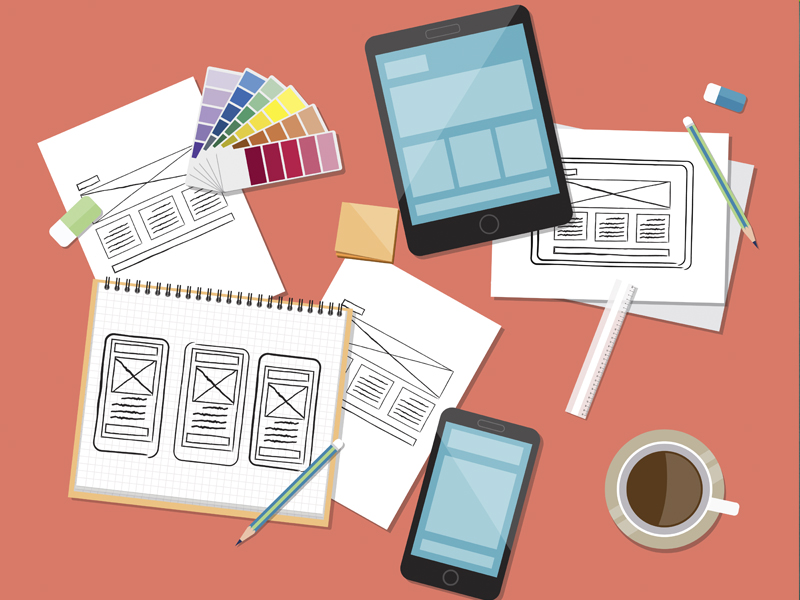
It seems like everywhere you turn, there’s an article on the latest, can’t-miss technology. There’s a new trend to try or must-use SEO advancement. We are already three months into a new year, and there is no doubt that there is an eclectic list of new web design and development trends. Theses trends don’t just look incredible to the eye, but promise to deliver utility and conversion to clients.
Web design is no longer about being just visually appealing, but truly about how one can impact business. Below are just a few of the evolving trends for the designer, developer, and user web experience.
Responsiveness. As mobile operating systems become highly capable tools for productivity, there come new requirements for usability. Responsive web design is crucial to minimizing the headaches associated with the evolution of mobile usage. There are various coding practices to ease the complexities of responsive web design, simply stated, it’s important for the design to be flexible and fluid. CSS3 for example now incorporates media queries that allow coders to call up different CSS code based on the device width so that your user’s experience is not compromised whether accessing from a laptop, tablet, or mobile device. Another thing to consider is that RWD has a significant impact on how websites are ranked in search results. Recent Google updates have been attributing less value to sites that aren’t “mobile-friendly.” Basically, if you’re a developer, learn RWD. If you’re the manager of a client-facing site, make sure it is responsive. This trend is here to stay.
Consumer View. Enough with technical side; let’s talk more about what the user sees. These are the “WOW” factors upon landing on a site page. One trend is large videos. For a few years, mega image home screens were the “it thing”. We have moved on to motion. Studies have shown that using videos does in fact boost conversion rates, as they are easier to absorb and understand than text. You can apply the work of image and text into one attention-grabbing element. Another aesthetic trend is the strategic use of color. With improved analytic capabilities, researchers have been able to understand and now apply concepts of color theory in web design more than ever before. A Kissmetric study shows that colors are the number one influencing factor for nearly 93% of people studied. Making a call-to-action web form pop using a complimentary color scheme, for example, is a great way to move users to conversions.
Personalization. Lastly, comes a combination of aesthetics of design and technology of development. There is obviously a trend toward personalization. Spend five-minutes on CodePen (a widely used web development application for designing, creating, testing, and collaborating) and you will quickly see the number of custom-drawn and carefully animated elements; incorporating solely the use of HTML5, CSS3, and JavaScript—no image files necessary. Micro pages and experiences are another way to personalize a user’s experience. The goal of these micro pages is to simplify the initial navigation path and minimize page changes. Microsites are streamlined to the user’s immediate interest so they can be launched into a completely targeted experience.
There are many trends in web design and development in 2016, and they will only continue to evolve. Don’t let your business or brand be left behind! If you are looking for strategies to revamp your website and stay up to date with the technological and design trends in a responsive site, give us a shout! We’d love to help.

Howdy! Do you use Twitter? I’d like to follow you if
that would be okay. I’m absolutely enjoying
your blog and look forward to new updates.
We do not. However, we are on Instagram and LinkedIn